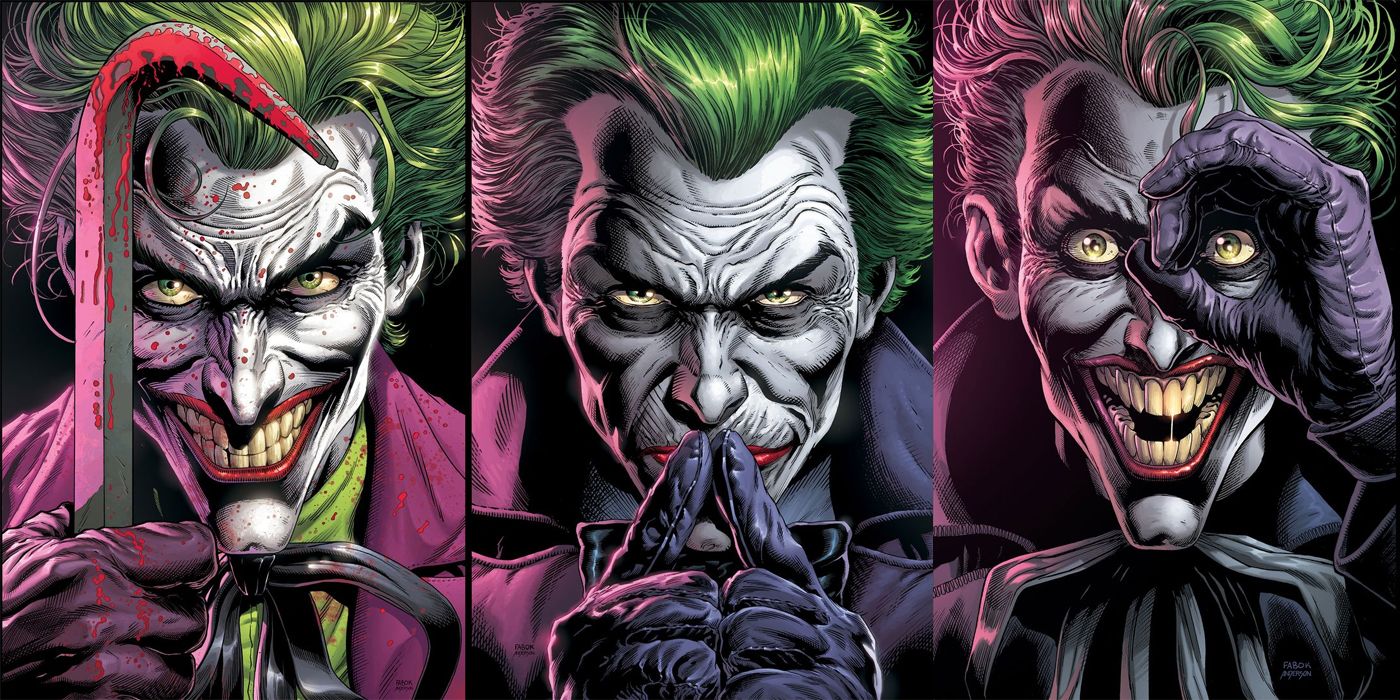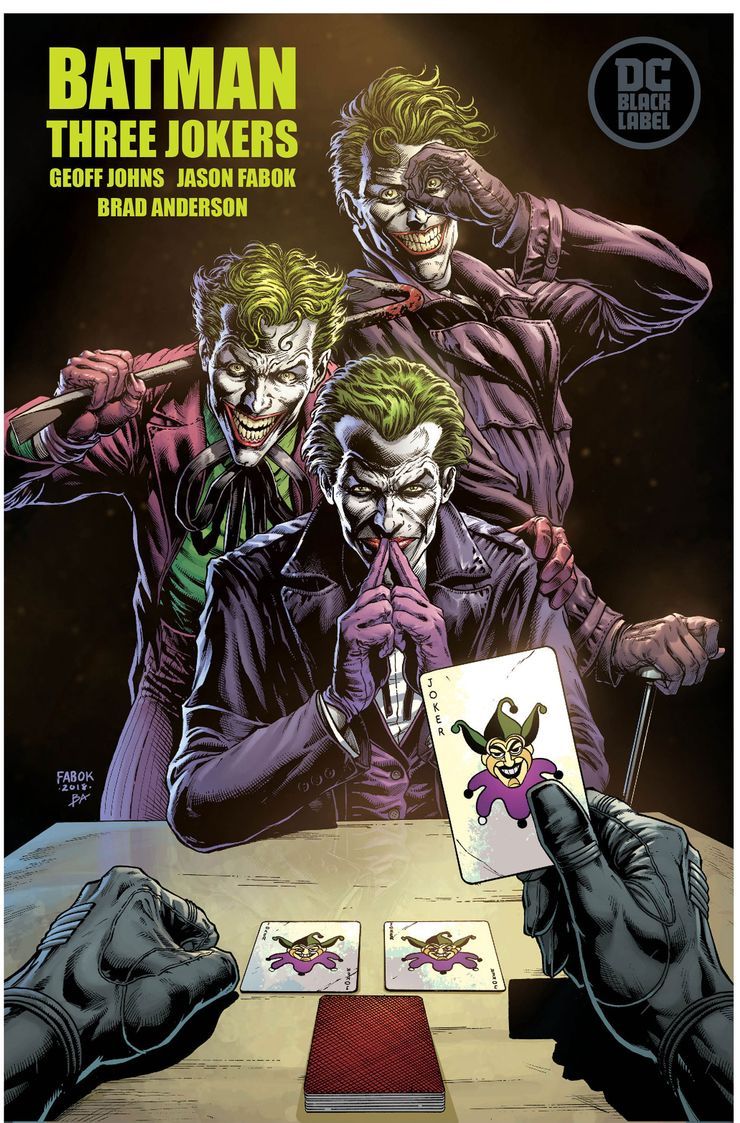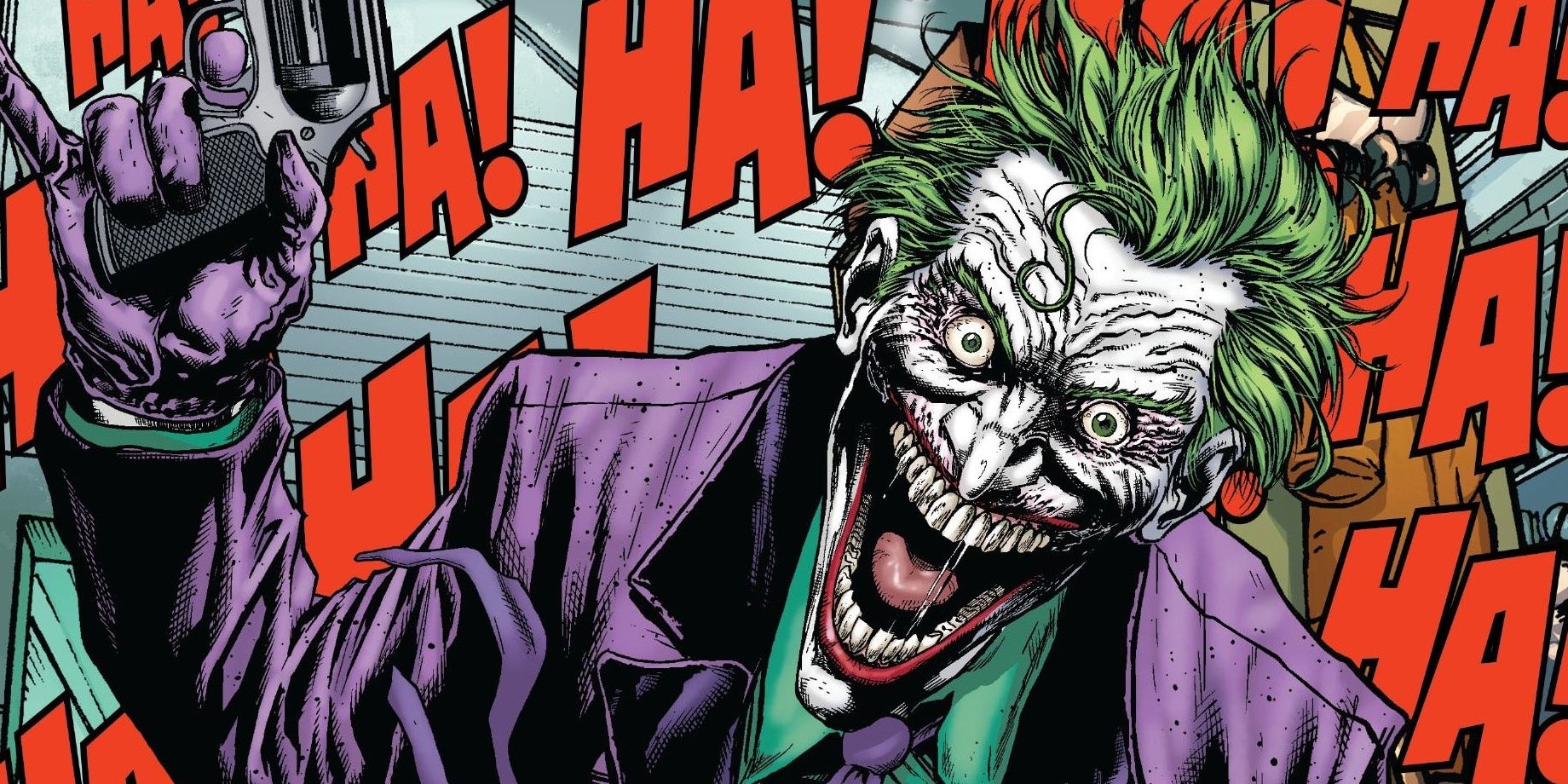Geoff Johns and Jason Fabok's Batman: Three Jokers has been delayed until Aug. 25, leaving fans with nothing but conjecture about who the three Jokers could be or how they fit into the DC Universe. It's possible "three Jokers" is a metaphor -- or that there really is more than one Clown Prince of Crime.
Here are some possible theories regarding the identities and roles of the three Jokers.
In Justice League #42 (2015) by Geoff Johns, Jason Fabok and Brad Anderson, Batman becomes briefly omniscient by occupying Metron's Mobius Chair during the events of the Darkseid War. One of the questions Batman asks the chair is, "What's the Joker's true name?"
The answer isn't revealed immediately. However, in Justice League #50 (2016), Johns reveals it isn't quite so simple: There's not just one, but three Jokers. This question within an answer has plagued readers for four years and it is finally set to be answered definitively in Batman: Three Jokers -- a story that will change the Joker forever.
From what has been revealed so far, this three-part miniseries from DC Comics' adult-orientated Black Label line takes stylistic inspiration from Alan Moore and Brian Bolland's Batman: The Killing Joke, as is pretty apparent in the three covers and in the interior layouts.
There are clear visual clues as to who each of the Jokers might be in the preview images -- although in this context, perhaps "who" is not the right word. "When" would be more appropriate. The most recent preview pages show the Joker driving an Ace Chemicals truck that's leaking, while Batman, Red Hood and Batgirl enter Gotham Aquarium, where a strange sight greets them from one of the fish tanks: smiling fish, poisoned by the Joker's signature toxin.
The laughing fish first appeared in Detective Comics #475 (1978) by Steve Engleheart, Marshall Rogers and Terry Austin. The pre-crisis Joker featured in the original "Laughing Fish" storyline became something of a model for the Bronze Age Joker. He was creepier and more dangerous than the more jocular versions of the character from the "swinging" '60s and smarter than the darker version featured in Bob Kane and Bill Finger's Batman #1 (1940).
The Bronze Age Joker was also similar to the one who featured in The Killing Joke -- though by then, the character had developed somewhat. The first Joker in the Three Jokers storyline may be based on the Bronze Age/Killing Joke version of the character.
The second Joker, who wields a bloody crowbar, appears to be the same Joker who Killed Jason Todd's Robin in Batman #426-429 (1988) by Jim Starlin and Jim Aparo. This Joker appeared on the cusp of the Bronze Age and the Modern Age. He murders on a larger scale than his predecessor, even becoming a nuclear arms broker and siding with terrorists.
This version of the Joker had a massive impact on Batman's history. And Johns said each of the Jokers in the Batman: Three Jokers miniseries will relate to "unresolved traumas". A Death in the Family is about as traumatic as it gets.
The third Joker is more of a mystery, but there are two distinct possibilities. Scott Snyder and Greg Capullo's New 52 Batman arc, Death of the Family, presented a Joker who was arguably more terrifying than previous incarnations. This Joker had his own face cut off to escape Arkham Asylum and he was brazen enough to launch an attack on the Gotham Police Station to steal his face back. In Snyder and Capullo's follow-up, Batman: Endgame, Joker returns with his face mysteriously, fully attached again.
This may be the third Joker, but there is another possibility which could be more viable: The hard-boiled mob boss seen in Brian Azzarello and Lee Bermejo's Joker. This version of the character is a psychopathic gangster who is respected and feared throughout the underworld. He's less stark-raving mad than insanely conniving and a completely different kind of dangerous altogether.
Regardless of the three Jokers' identities, there is, of course, the question of why there are three. They could be Jokers from across the DC Multiverse, which would be a simple -- if unlikely -- explanation.
Another possibility is that the Joker identity is as fluid as his origins. Perhaps the Joker persona is just too big to be inhabited by just one person and it takes three separate individuals to keep him alive in different situations. This could mean Joker triplets, which would be quite controversial. Batman: Three Jokers artist Jason Fabok did say that the series ending is "going to cause quite the stir and is the gutsiest thing written in Batman in 80 years."
Finally, there is the possibility that three separate beings inhabit one body and that each of them surfaces at different times. Johns has cited trauma as a very important theme in Three Jokers, which can be an impetus for developing multiple personalities. The Joker may simply be a deeply scarred individual who has developed three powerful personalities as a coping mechanism.
There is definitely more to each of these Jokers than meets the eye and Johns has made it clear this is not just another "Batman/Joker" story. The Joker is both the hero and the villain in Batman: Three Jokers, which will certainly be unlike anything fans have seen to date.
Batman: Three Jokers #1 is scheduled for release on Tuesday, August 25, on DC Comics' Black Label imprint.



